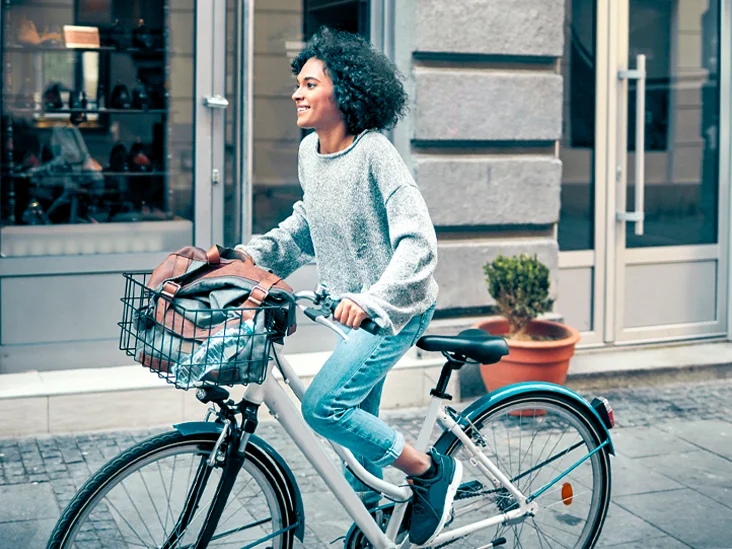
As a kid, your perfect bike was quite obvious – either the pretty pink one with the tassels, or the cool blue one. But trying to pick out your perfect bike as a grown-up can be pretty challenging. Frame, gears, brake type, price range – a lot of different factors go into making this decision. We’ve broken down the entire process for you.
1. What do you need it for?
Different bikes are suited to different kinds of use. For eg., if you live in the city, what you need is a bike that’s suitable for roads. You may even wish to look into getting an electric bike to give you a little bit of extra power on the road (and, once you have figured out how to Calculate range of ebike battery, you’ll know whether a particular model you are looking at will be able to get you to and from the office each day). But if you’re looking for something more adventurous to bike on trails with, a mountain bike is what you need. The main different kinds of bikes are –
Mountain bikes: Perfect for rough, off-road use. But they can be used on pavements too.
Road bikes: Perfect for if you live in a city, and want to get around biking on pavements. They’re quite fast.
Hybrid bikes: They’re somewhere between mountain bikes and road bikes – not as rugged as mountain bikes and not as fast as road bikes. But this is a great choice if you want to bike in places that aren’t as smooth as the city.
Beach cruisers: This is perfect for casual biking. A lot of people use these bikes around boardwalks near the beach.
There are other different and more specific types of course – like BMX bikes. But from a beginner point of view, the above 4 are enough.
2. What is your budget?
Bikes are an expensive investment, so figuring out your budget is essential. If you’re looking for bikes made in usa, spending around $80 – $300 can get you some basic metal frames. They’re just enough to get you around and are quite stylish too. A higher budget of $300 – $1000 will land you a decent aluminum or lighter metal bike, which is perfect for everyday riders. Their high-quality wheels, chains and pedals ensure that it lasts longer. If you can splurge over $1000, you’ll be able to get yourself some really light metal (like carbon or titanium) bikes, which are more rigorous and perfect for everyday use. They can even be used in small competitions. Nowadays, the options are so vast that you can even build your dream bike model by choosing from several sizes, colours, wheel types, etc.
If you want a better bike than your budget allows you, second-hand bikes are a great alternative. You can usually get decent bikes that way, just make sure that you check them thoroughly before purchasing.
3. Does it fit you?
So you narrowed down on a bike type, and you figured out your budget – don’t buy the first bike that you think looks cool! Test it out yourself. Sit on it, see if it’s comfortable, check if you can control it well and make sure the reach between the seat and the handlebars is comfortable. If your bike is too big/small for you, it can prove to be extremely uncomfortable. Your ideal frame size depends on the type of bike, your height and your inseam. If you’re at a store, the salesman there will usually help you out with what size you should get.
4. What about the gears, suspension and brake types?
Gears: If you’re going to be doing a lot of adventurous and challenging riding around mountains, opt for more gears. If you’re mainly going to be on flat land, and are quite good at riding, you can go for fewer gears.
Suspension: Suspension helps you keep your bike suspended if you’re riding in rugged areas. A mountain bike should ideally have full or at least front suspension. But if you’re only going to ride on roads, you won’t need any suspension at all.
Brakes: There are many kinds of brakes like rim brakes, disc brakes, etc. But if you’re just a beginner, you’ll most probably have to go with the brakes that come with the bike. However, it is good to research on the kind of brake you have.
5. Go for a test ride!
Take your bike for a test ride, but make sure you pay attention to the following –
- Are you comfortable? Your posture, the reach, the seating, the pedaling should all be comfortable and not require too much effort.
- Are you able to handle the terrain? This doesn’t matter if you’re going to stick to flat terrains, but if you’re going to rugged terrain try to see if your bike will be able to handle it.
- Are you carrying everything you need? If you’re planning on carrying stuff with you when you actually start riding, make sure you can do that in the test ride itself. Sometimes these items weigh the bike down and you may find it harder to pedal. Opt for a sturdier bike in such cases.

